In the old days of B2B marketing there were loose metrics that were used to determine success, such as the number of leads created. And while the number of leads created is a good top of the funnel metric to keep tabs on, today’s B2B demand generation professionals are more directly responsible for the metrics that move the needle for sales, and these include qualified marketing leads and pipeline. Conversational marketing is a game-changing process that allows your demand gen team to define a set of qualification rules up front, and when qualified visitors arrive on your website, it turns your website into a real-time meeting space where your reps can begin selling instantly.
While every company is unique, there is a common question every demand gen team asks: How do we determine if a prospect is qualified? There are commonly three groups of data that demand gen teams use to determine if a visitor is qualified or not. You can create qualification rules using any one of these rules, or in combination. They are:
In this article we’ll go through each of three areas in detail and show some examples of how companies are using data to qualify website visitors in real-time
One thing you know about every visitor on your website is where they came from before they found you. For example, every website analytics tool will show you something called a “Referrer” or a “Referring URL.” The referring URL will show you if the user came from a Google search, a partner website, an application directory, or a blog post on someone else’s website. Most of the time a referring URL is not a good source of information to determine who’s qualified because it does not contain enough information or is not targeted enough. For example, just because a user came from a google search does not mean that this visitor is qualified.
Rather, instead of thinking of the referring URL as the qualification criteria, think of the marketing campaign that drove the visitor to your website as the qualification criteria. Presumably most demand generation marketers are running campaigns that are designed to target a specific type of buyer, and are putting a chunk of their marketing budget against these campaigns. So while a basic Google search might not tell you if someone is qualified or not, someone who clicks through a specific search marketing campaign might be.
All online marketing campaigns contain a basic form of tracking. Your online ads (search, social media, display, retargeting, paid placements, app stores, email) can embed a tracking code in the URL of the ad, which can be used in real-time to know exactly where the visitor came from and the detail of the specific campaign (location, creative, keyword, etc) that the prospects responded to. Let’s go through what this looks like in practice for a few types of campaigns.
Search marketing is one of the most widely used and valuable sources of qualified traffic for demand gen marketers. Let’s take the example of tech company Okta, who’s most expensive product, and the one that drives the majority of their revenue, is something called “Okta SSO” Now the demand gen team at Okta doesn’t consider everyone who does a google search a qualified visitor, but for those who search on the keyword "enterprise sso" and click through specific Okta advertisement are automatically considered qualified prospects
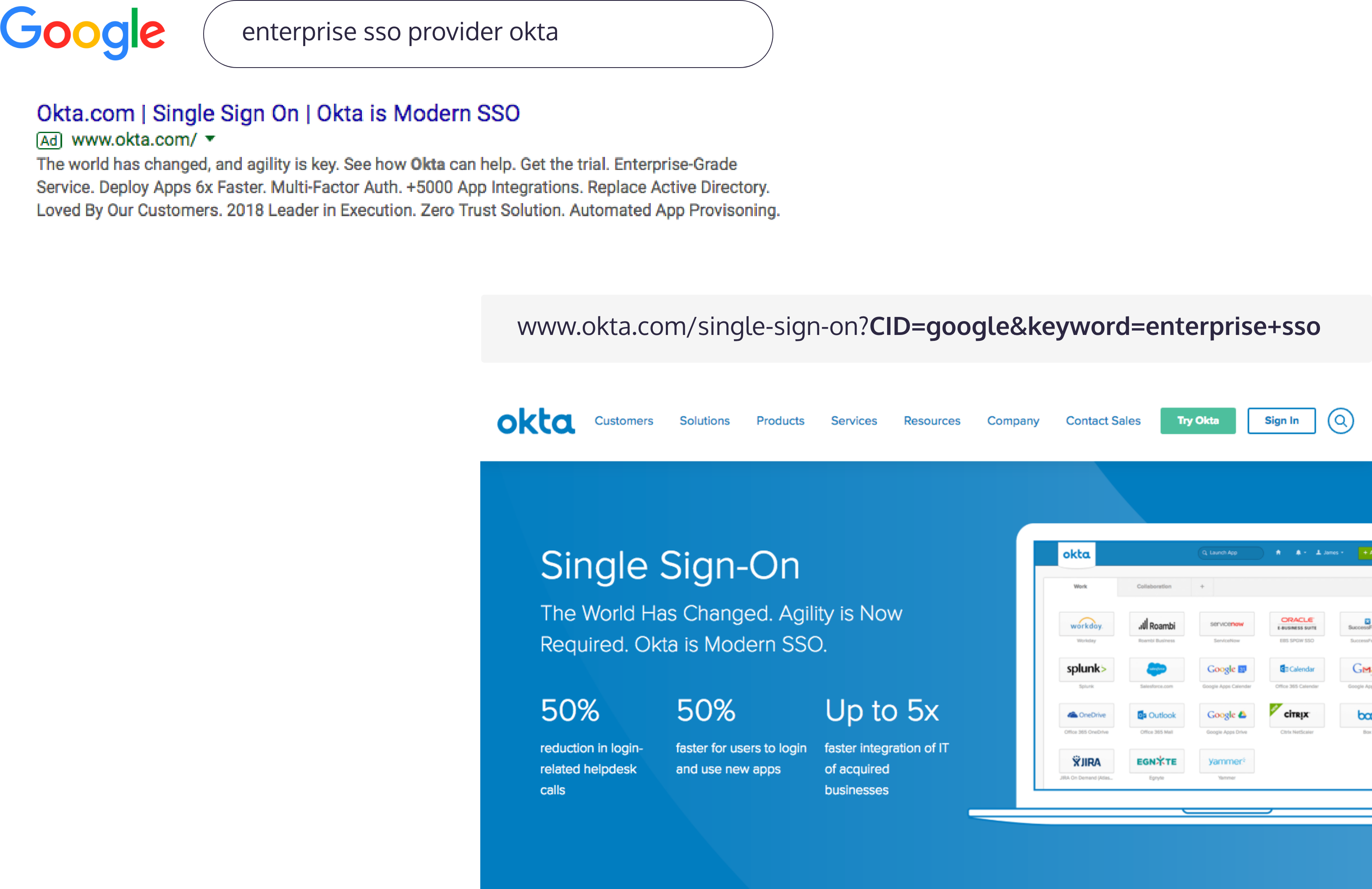
Social Media is a great advertising channel for demand gen marketers because of its extreme targeting ability. In this case, Salesforce is targeting marketing professionals on Facebook who work at specific companies is specific geographies. The people that respond to this campaign are automatically considered qualified visitors for Salesforce's Marketing Cloud sales team.
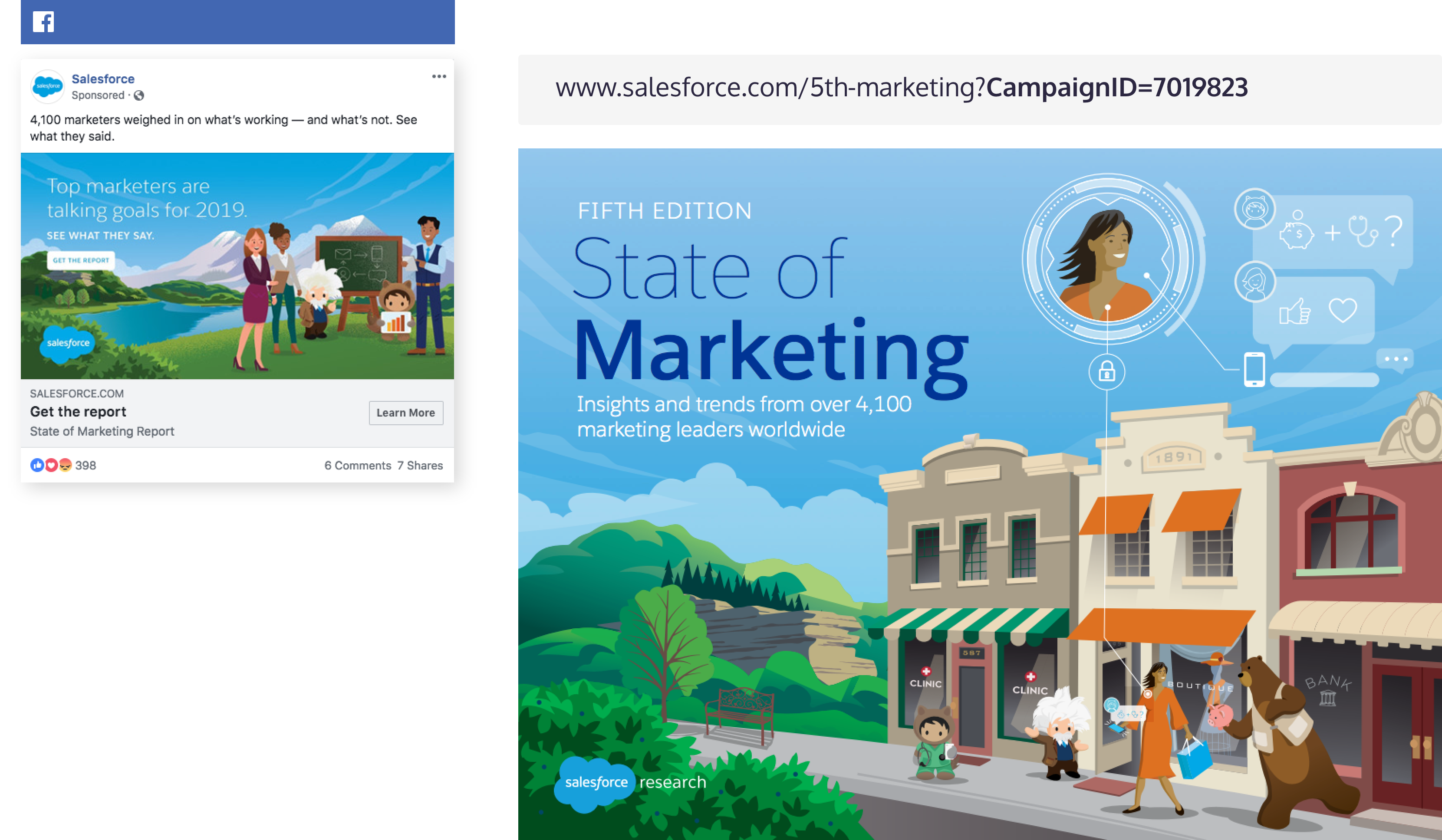
Display advertising, retargeting, and content marketing are used in similar ways to social media. By finding, targeting, and displaying content that is relevant to a specific buyer and then driving that person to act by offering them relevant content. Here is a similar example of Salesforce’s Pardot team running ads on Forbes.com to target qualified marketing professionals. People that are subscribes to Forbes.com and are looking for lead generation tools are automatically considered qualified prospects for the sales team,
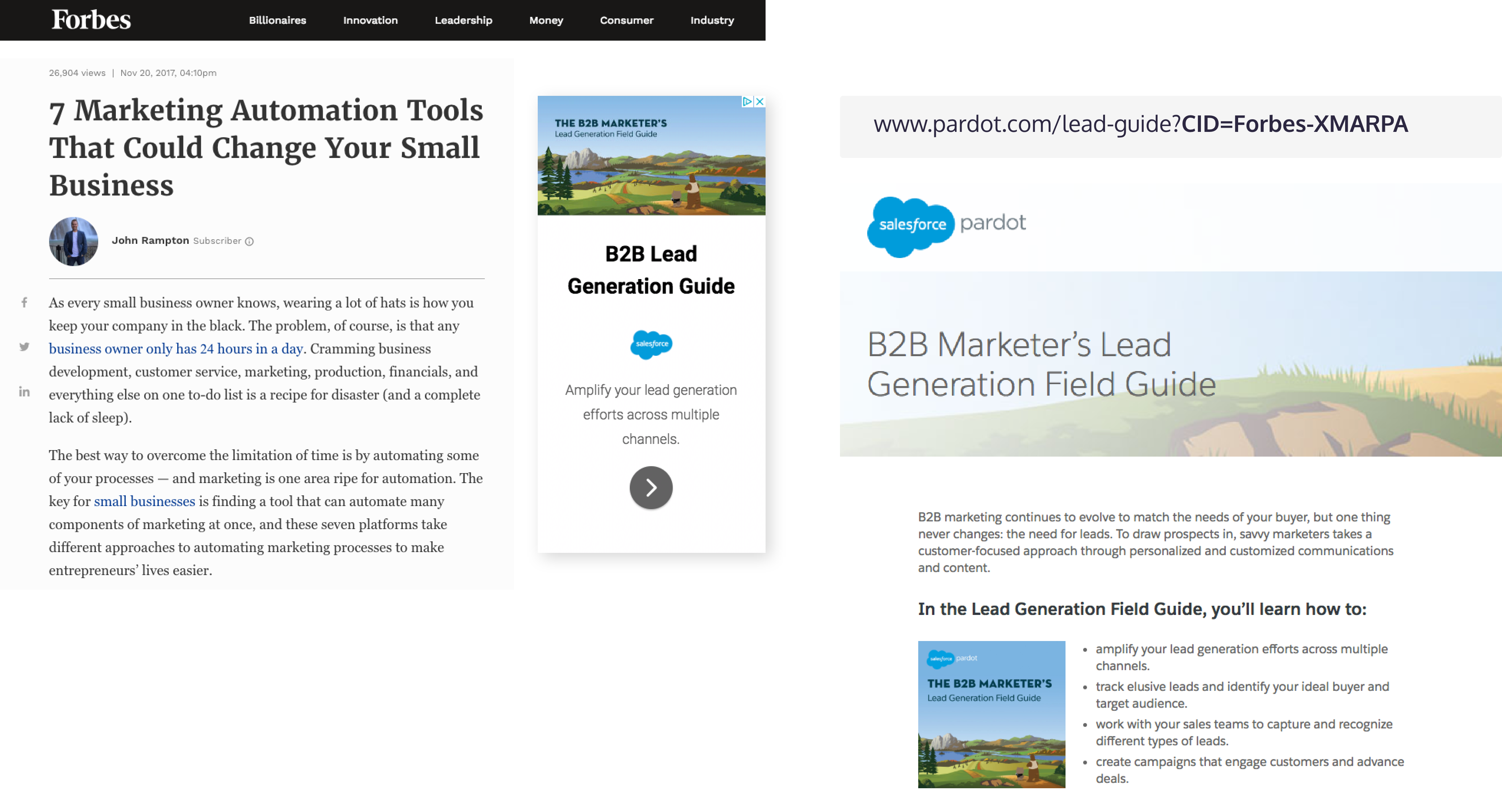
Paid placements are used by marketers in a wide variety of industries to place products and services on websites that are known to generate qualified traffic. For example, insurance brokers would pay to be listed in directories that small and medium sized companies use to browser for company health insurance. In the example below, here is the Utah-based company Qualtrics that is paying for placement on a business directory called G2 Crowd. People who come from the G2 Crowd review site are automatically considered qualified prospects for Qualtrics.

Many companies in the technology industry use application exchanges and app stores as a means to market their products and services to specific buyers. For example, the IT consulting powerhouse Appirio uses the AppExchange as a way to generate qualified traffic to their website. People who come from campaigns run on the AppExchange are automatically considered qualified prospects by Appirio's sales team.
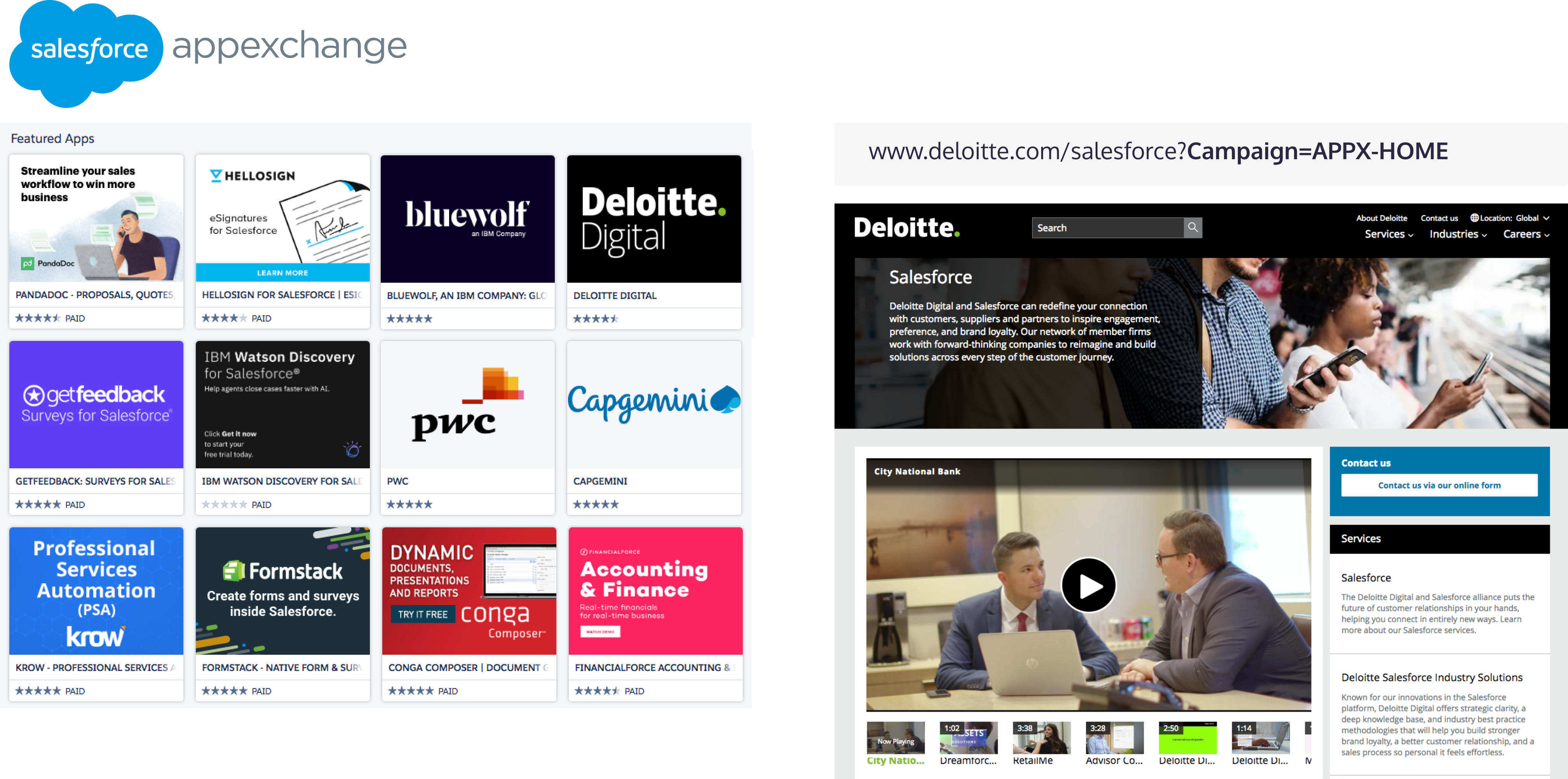
Email marketing campaigns are unique and stand apart from the other online campaigns shown above because you already know a bit of information about the recipients, their name and email address. As a result, email campaigns can be targeted at qualified people who work at qualified accounts. Any clicks from these emails that land on the website are known to be qualified prospects. In this case eHealth uses email lists they have in their database to drive qualified prospects to their website.
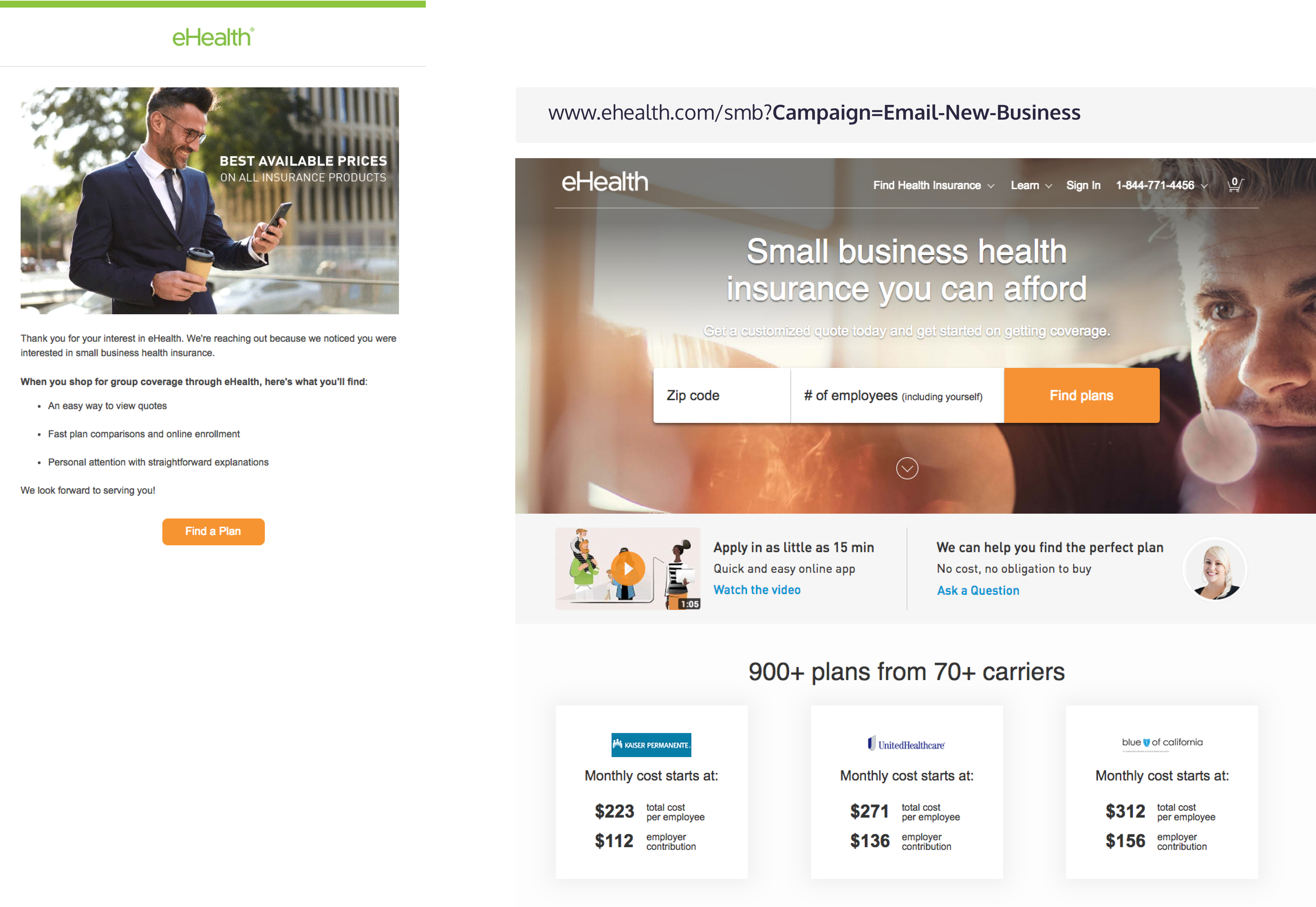
The second way many companies use to determine qualification is based on specific pages that someone visit on your website. It’s no secret to demand gen marketers who are deep in the data that the majority of pipeline is typically generated from a small number of pages on your website. In fact it’s typical that 80% of a B2B company’s pipeline is generated from by less than 10 pages on your website.

With that statistic in mind, it’s critical for you to know how many pages on your site generate 80% of your pipeline, and exactly what those pages are in priority order. CMO’s like Asana’s Dave King even brand these pages internally so that everyone in the marketing department is focused on what he calls the “10 Golden Pages.” Let’s take a look at a few examples of what these Golden Pages look like for a few different companies:
Landing Pages are specific pages that you set up as entry points to your website for people who respond to specific campaigns. For example, new financial services company Brex creates personalized landing pages that are tailored to specific companies. In this case, any executive from Airbnb who responds to an ad lands on this page, where the content speaks directly to that person. Any visitor to this page is automatically deemed qualified prospects for Brex.
Many companies have product pages on their website that are of high value. The product might account for a large percentage of pipeline/revenue or it might just have a high price point. If your company knows that a specific product interest is typically of high value to your sales team, you can automatically qualify visitors simply based on traffic to that page. Online survey company GetFeedback knows that their “GetFeedback for Salesforce” is a high value product, so any visitors to this page are deemed automatically qualified by the marketing team.

Many companies have one or more pricing pages on their website. Typically visitors who are exploring pricing are interested buyers, butu not every product at every price point means that a visitor is qualified. For example, email marketing company Campaign Monitor offers a specific price point for “high volume senders” which is where the large deals usually come from. Anyone that indicated that they are a high volume sender is automatically qualified by Campaign Monitor

If a buyer’s company size is a good indicator of big deals for your sales organization, you typically have pages on your website that are built specifically for those companies. In the case of project management company Asana, their deal size is based on the number of employees at the company they sell to. So the larger the company the larger the size of the sales opportunity. As a result, Asana has specific pages on their website for “enterprise” visitors and anyone who visits this page is automatically qualified.

It’s quite common for B2B marketing organizations to set up industry specific pages for a product or service. For example, your product might be very applicable to buyers in the construction industry but not for those in the healthcare industry (maybe because of additional regulations in that industry). For example, financial services company Payzer sells most of their larger deals to the construction industry, and therefore, anyone who visits their construction industry page is deemed a qualified prospect.

The final method that B2B marketers use to qualify visitors is to define a set of qualification rules based on information provided to you by the website visitor. Today, marketers set up mechanisms on their website to collect information, such as lead capture forms or lead capture chat bots. Both of these mechanisms are based on the presentation of an offer (for example, talk to a sales rep, download a PDF, or watch a video) and that offer is behind the form or chat bot that serves as a “gate” and a visitor must provide a set of information to pass through the gate. Lead forms and chat bots can be configured to collect any amount of information desired, but typically gather information such as a person’s name, email address, company size, industry, and product interest. For example:

While every company has a specific set of qualification rules, your sales team is looking for people that are the right buyers for your products and services. Here are two examples of website visitors who provided lead capture information

Historically, the information collected by a lead form or chat bot was processed asynchronously, meaning that the visitor provided their information and then received a message saying “thanks, we’ll get back to you shortly.” Today you can run lead qualification rules against these forms and chat bots in real-time and react to your visitors accordingly.
How do we determine if a prospect is qualified? There are commonly three types of rules that demand gen teams use to determine if a visitor is qualified or not. They are:
You can create qualification rules using any one of these rules, or in combination. The objective of real-time qualification is for you to identify qualified buyers as quickly as possible, and tailor how you engage with these visitors. The world’s best sales and marketing teams know that timing is everything, and the faster and more personalized engagement you can have with a qualified visitor, the better the outcome will be for your pipeline and selling goals.
Discover how we can help you convert more prospects into pipeline–right from your website.